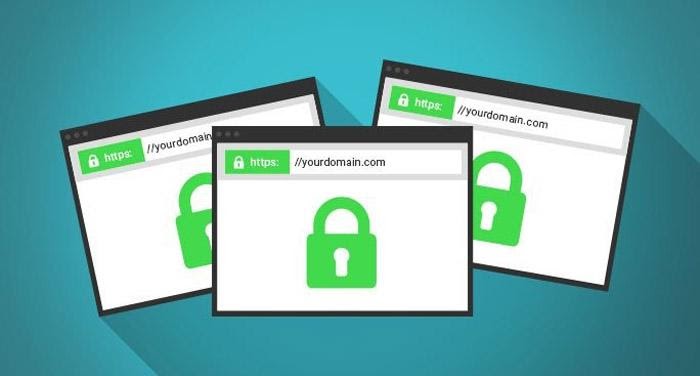
We have seen a surge in online activity due to faster internet speeds and penetration of smartphones. While technology has been a boon, there is also increased activity in the dark web. There has been an increased number of incidents of data breaches and activities of phishing and pharming. And the number of such incidents is increasing. The coronavirus pandemic has led to a sudden spurt in such attacks. A report by Fintech News shows that cloud-based attacks rose 630% between January and April 2020. A successful data breach can lead to severe problems, like loss of trust, hefty fines, and lawsuits. The average cost of a data breach is known to be around US$ 3.92 million in 2019.
What is a smart choice?
Any data breach can lead to the loss of possible revenues. One way to prevent this is to install an SSL certificate. It will help by encrypting the communication with the visitor. As a result, no third-party can have unauthorized access to the information. It will also help to secure the webserver from any external attacks. There are several Certification Authorities (CAs) who provide these certificates. You may select one according to your requirements.
What is a Multi-domain SSL Certificate?
Do you have multiple domains covering various aspects of your business? If the answer is yes, then the Multi-domain SSL Certificate is the ideal option for you. It can allow encryption of all your domain names through a single certificate. You are saved from the hassle of interacting with multiple CAs that add to your already stressed-out timelines. These certificates, also called SAN certificates, can allow you to have full control over the SAN field. The business has the option of securing domains and sub-domains. If needed, you can also change, add, or remove some of the SANs quickly.
For example, you have three lines of business for which you have three separate domains, viz.
- example1.com
- example2.com
- example3.com
How Does it Work?
These certificates use Subject Alternative Names (SANs) to secure multiple hostnames. The webmaster can include several domain names in the SAN field. It will allow the certificate to work for any of the included domain names. These certificates were earlier created for specific server environments, like the Microsoft Exchange and Communications servers. Now, they can be used for any server environment. The certificates are available for different levels of validation, like organization validation (OV), domain validation (DV), and extended validation (EV).
Benefits of Using These Certificates
The Multi-domain SSL Certificate can allow you to encrypt all these websites through a single certificate. It will be economical for you as well. Several additional benefits come with it.
- Enhancement in search rank
Search engines like Google have long advocated for a secure internet. In 2014, Google had come up with an update that provided preference for HTTPS websites. According to this update, if all other factors would remain the same, the search engine would give priority to HTTPS websites. You must keep in mind that only having an SSL certificate will not improve your rankings. It would help if you still carried out the supporting white hat SEO activities. If you wish to have a better search ranking, you must ensure there are more visitors ion the site. The padlock that comes with the certificate enthuses a sense of trust in visitors that the site is safe.
- Web browsers may brand the site as insecure
Web browsers also have an objective in ensuring a safe internet. It is the reason that flag insecure sites. In 2018, Google started marking the non-HTTPS as “Not Secure”. And not only Google, but other major web browsers are also marking non-HTTPS sites as insecure. There is also an ongoing discussion that web browsers may block such websites. Such warnings may lead to a loss in the number of visitors visiting the website. It would lead to a loss in potential customers as well as a significant drop in search ranking due to a higher bounce rate.
- Enthuses trust in visitors
As major web browsers are marking insecure sites, visitors can make out the safe sites and are moving away from the unsafe ones. Hence it becomes necessary for businesses to procure these certificates to ensure their visitors continue to trust the brand. The CAs issue the certificates only after proper validation. This ensures that renowned authorities authenticate the sites. Moreover, if you wish to have an e-commerce site, you must adhere to the PCI-DSS norms that require the site to have an SSL certificate.
- Saves resources
Imagine an organization with five lines of business and having a website for each. It would be cumbersome for the IT team to procure separate certificates and then configure alerts about the time for renewal. If the certificate expires, there will be a “SEC_ERROR_EXPIRED_CERTIFICATE” message for visitors. Having a Multi-domain SSL Certificate will ensure that there is a single window for all the websites. It will cater to the security of all the websites, and it will be economical for the company as well.
Activation of the Multi-domain SSL Certificate
Once you purchase the certificate, the activation of the policy must be done. To activate it, you must have a CSR (Certificate Signing Request) code that must be generated on the server. It can be generated for the primary domain only. The various brands will have different procedures that must be completed, and you have to enter the CSR code and the domains that you wish to cover in the certificate.
Conclusion
As technology progresses, there are more internet users. It has also led to a spread of the dark web. There are more incidents of data breaches that have led to an increased sense of caution among businesses. They are now formulating policies that can prevent such attacks. For the industry behemoths who have multiple domains, the best way to safeguard their online assets is to have a Multi-domain SSL Certificate. In this article, we have discussed details about this certificate and some of its salient features and benefits.






